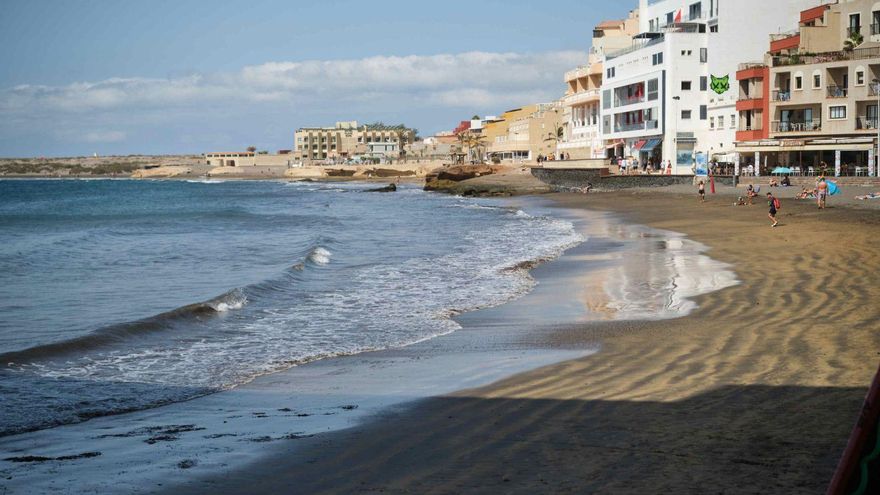
The pollution from wastewater is a serious problem affecting the coast of Tenerife. One of the most contentious areas is the municipality of Granadilla de Abona, one of the most tourist-oriented in the south of the island. Over the last five years, the Council has been forced to declare beach closures on as many as 11 occasions: two in 2021 and 2022, three in 2023, one in 2024, and four so far in 2025.
Three of this year’s closures have occurred this July. Last Sunday, the 20th, the beaches of La Jaquita and La Batata, located in El Médano, were closed preventively due to a blockage in the Montaña Pelada submarine outfall. As a precautionary measure, swimming was prohibited until the necessary technical inspections could ensure the safety of the waters. It is important to remember that submarine outfalls are conduits that are supposed to discharge pre-treated water into the sea to minimise their impact on the marine environment.
La Jaquita was reopened on Tuesday the 22nd, but that same day, Ensenada Pelada was closed. It should be noted that this beach had already been shut in May after high levels of the E. coli bacteria, which is present in sewage, were detected. The reopening took place after an analysis confirmed that the waters were now suitable for bathing. Finally, Ensenada Pelada and La Batata were reopened last Wednesday the 23rd after it was confirmed that the water conditions were optimal.
In response to questions from EL DÍA, the Council has so far declined to provide an explanation for what is happening in the sewage system of the municipality that causes these occasional episodes to recur so frequently.
These closures in Granadilla de Abona add to a long list of incidents that have been affecting the Tenerife coastline for years, from south to north. According to Juan Rumeu, president of the Canary Business Association of Environmental Consultants, the main causes of the problem in Granadilla de Abona are the inadequate sewer network, the existence of homes without connections to the sewage system, and the malfunctioning of wastewater treatment plants. “In many cases, untreated wastewater is dumped directly into the sea,” he claims. Although the problem is not new, Rumeu clarifies that the population is now “more alert,” partly because Public Health, the department of the Canarian Government responsible for monitoring the coastal waters, has intensified oversight, allowing for more cases of contamination to be detected. The beaches of El Médano, he says, are a “clear” example: “They close for two days, reopen, then close again in five days and it seems that nothing happens.”
Rumeu warns that many citizens already know how to recognise signs of contamination, such as sheen on stones, although there is still a general lack of awareness. He also criticises the attitude of some public administrations, which tend to downplay the problem with the misguided intention of not causing social alarm. The greater risk, he believes, is that the population continues to swim in contaminated waters. “Pollution persists and can lead to illnesses that cannot be solved with simple treatment.”
The spokesperson for environmental consultants points out that these are infections that can pass to humans “simply by contact.” He also emphasises that pollution “does not disappear easily,” but rather “depends on many factors,” such as wind or tides, which cause it to dilute over time.
The expert quantifies the investment needed for Tenerife to solve this problem and prevent the systematic closure of beaches due to wastewater contamination at €1.2 billion. He attributes a significant portion of the problem to the fact that “treatment facilities do not win votes in the elections.”
Rumeu reproaches public representatives for “not taking a serious view of a problem that severely affects Canarias and especially Tenerife.” He reminds us that there are over 120 points of contaminant discharges into the sea in Tenerife alone and that 100 million litres of wastewater are discharged daily across Canarias, a quantity comparable to 40 Olympic-sized swimming pools. He concludes by recalling the most serious case on the island, that of Playa Jardín, the main bathing area in Puerto de la Cruz, which remained closed for 349 days until it reopened on June 17th.
A persistent risk: Six outfalls that lack authorisation
The main beaches in the municipality of Granadilla face a series of threats that partly explain the closures of recent years. In the most visited areas of the coast, there are six active discharge points that lack authorisation. This can be seen in the latest census presented by the Ministry of Ecological Transition of the Canarian Government, which states that there are 403 points of discharge across all of Canarias. Two of these unauthorised points in Granadilla are located in the El Médano area, which has a population of 9,000: one on land, right in the most populated zone, and another a few metres from the coastline. There are two others (one on land and another near the coast) on La Batata beach, which was recently closed due to a problem with the outfall, and one associated with the Los Balos pumping station and another related to the Beach I pumping station.
Subscribe to continue reading
















